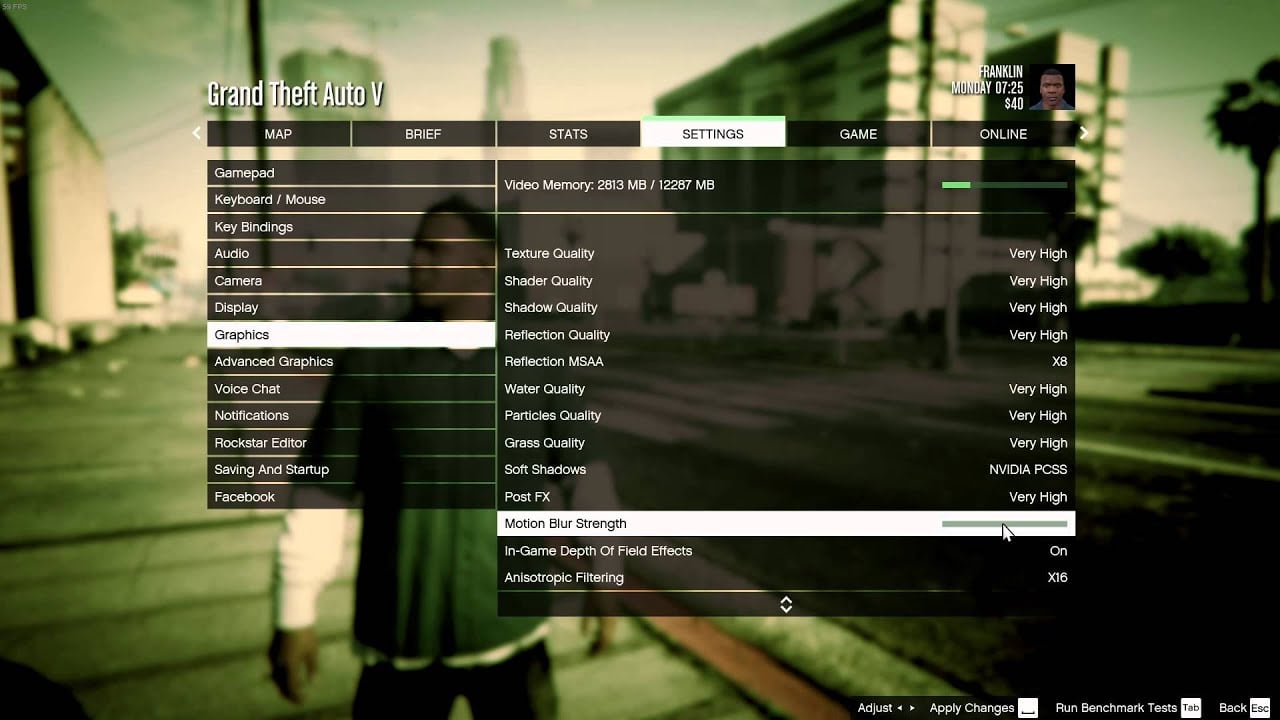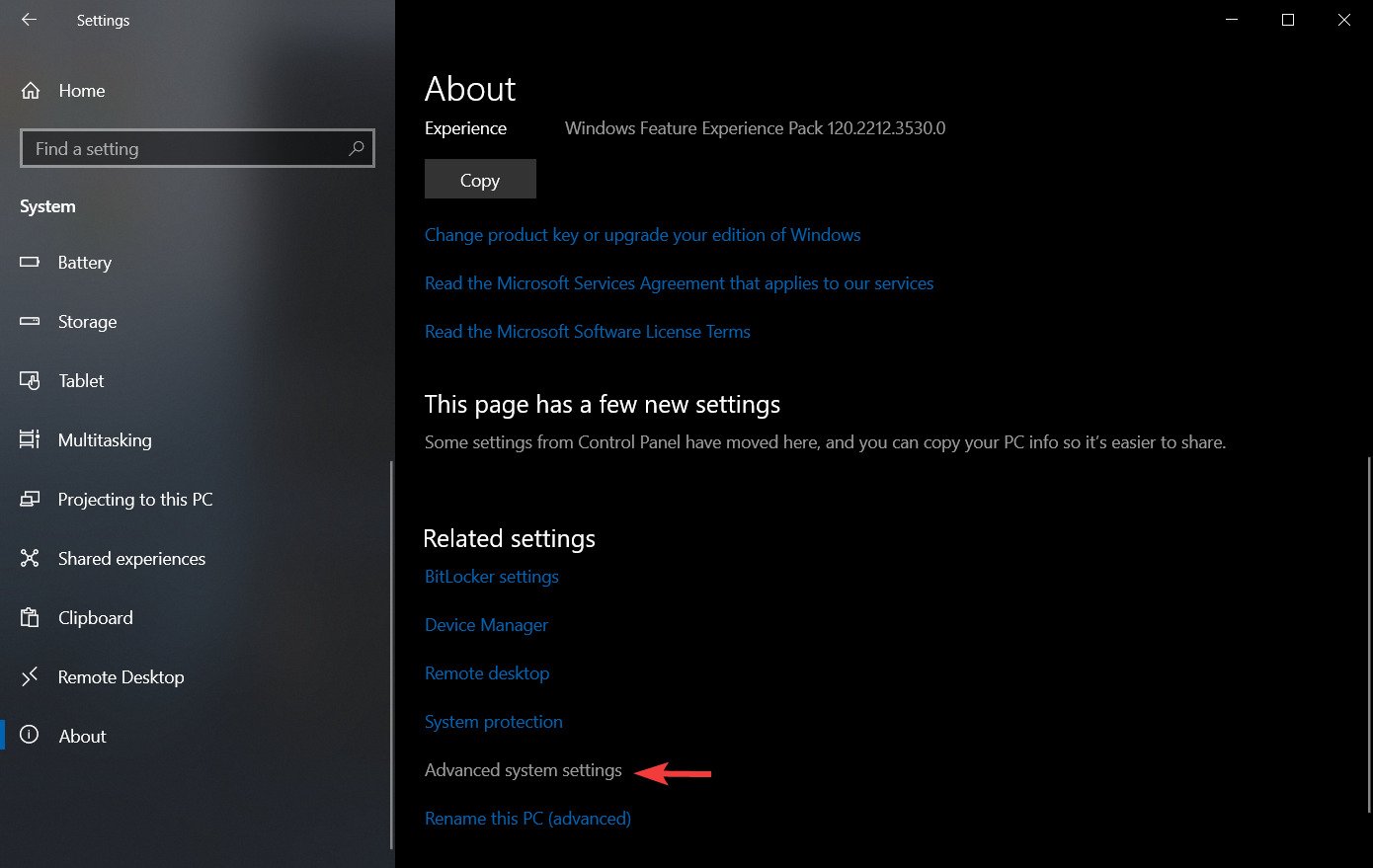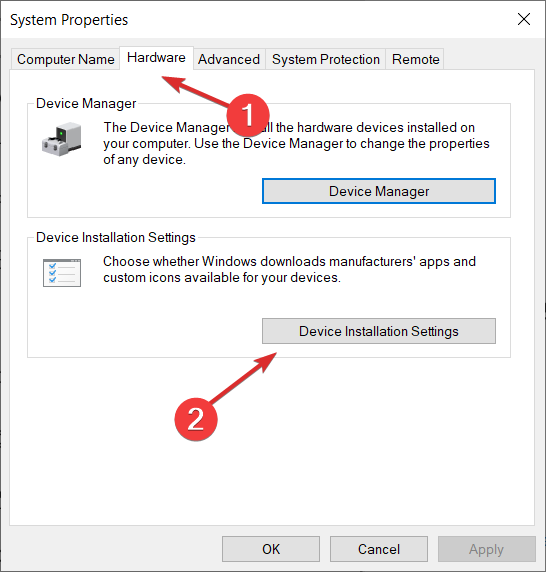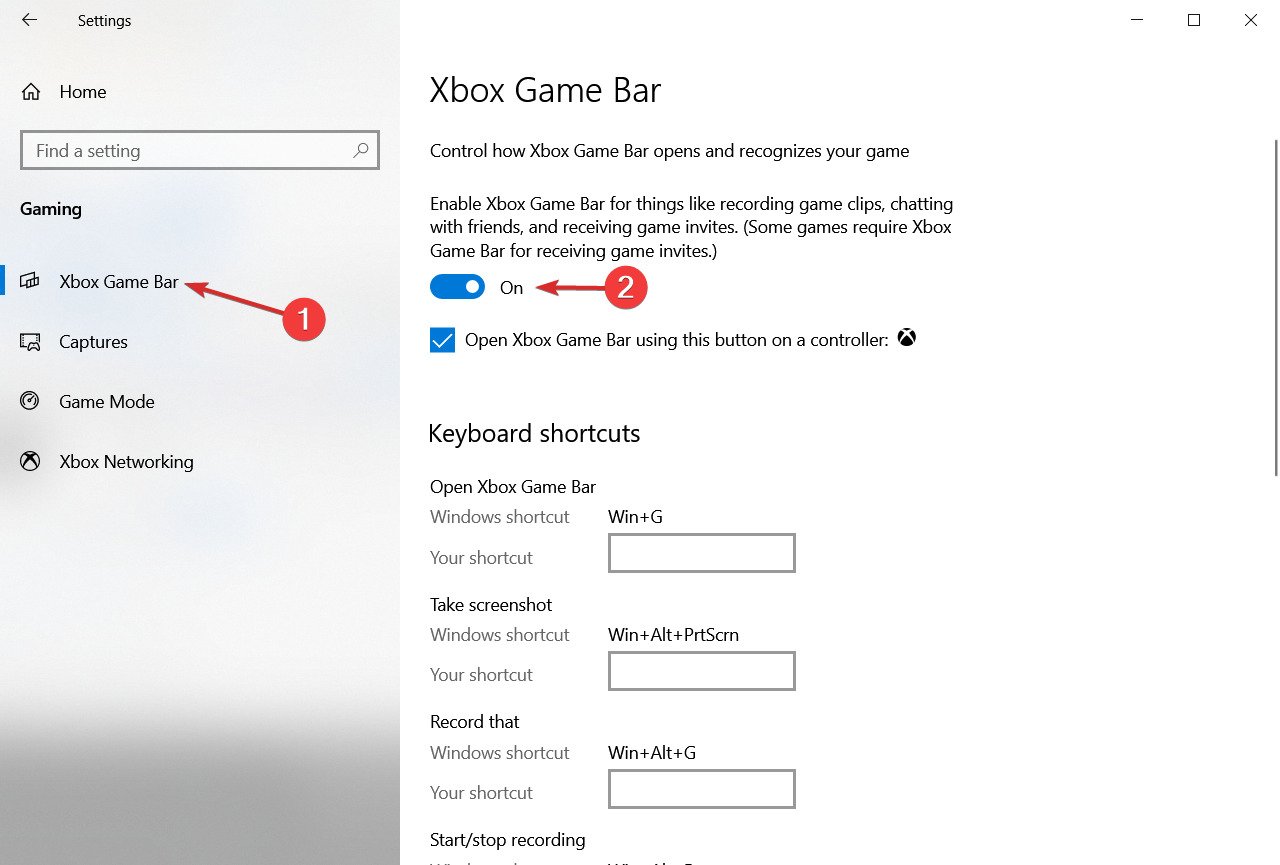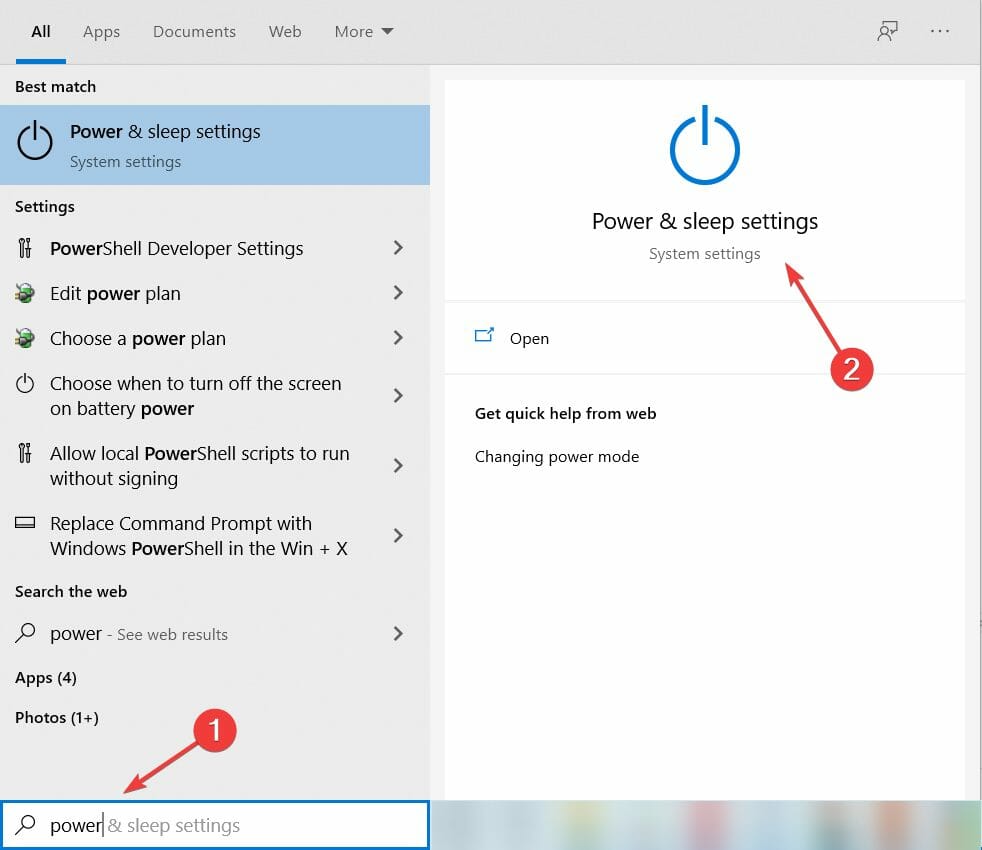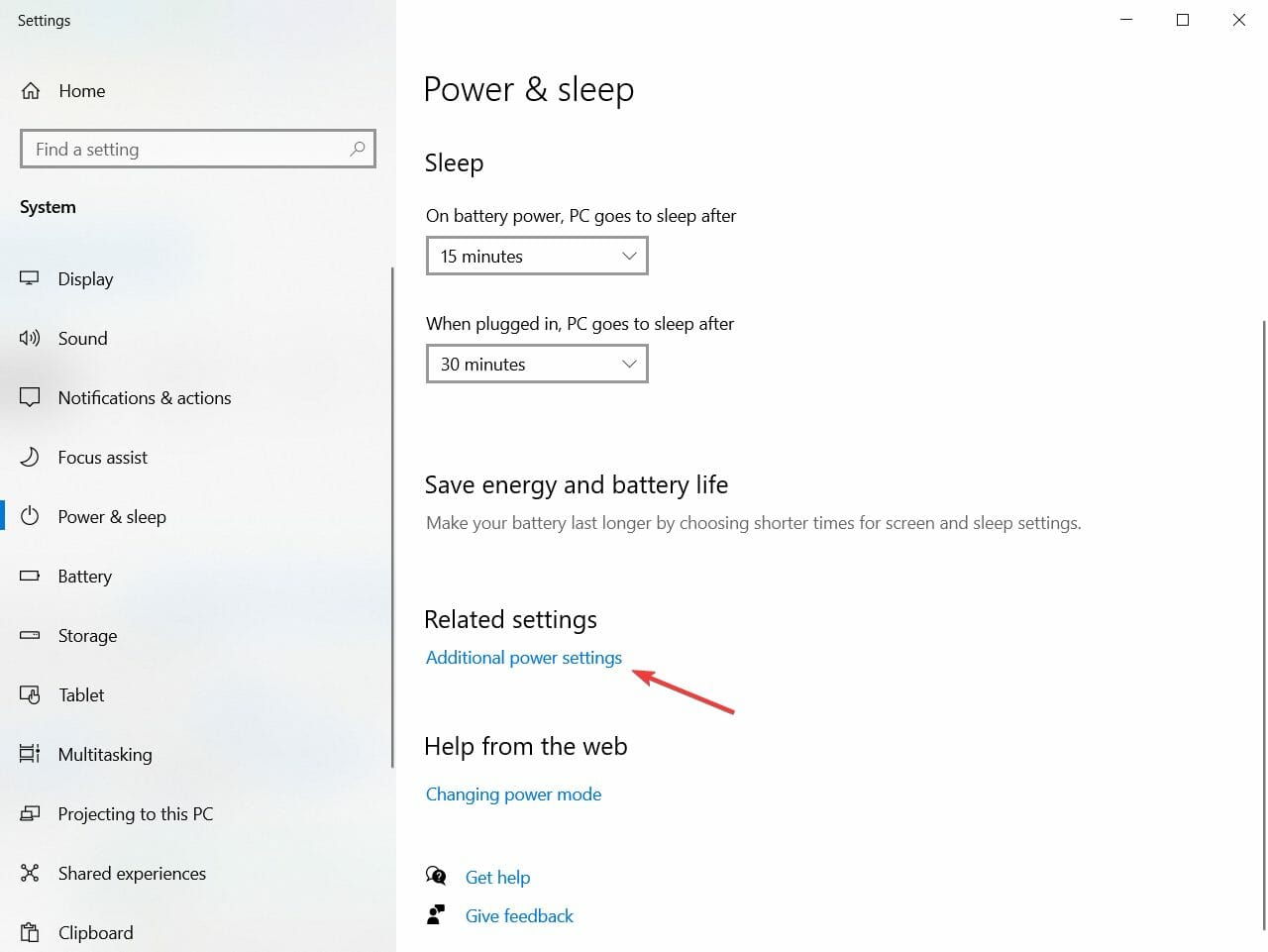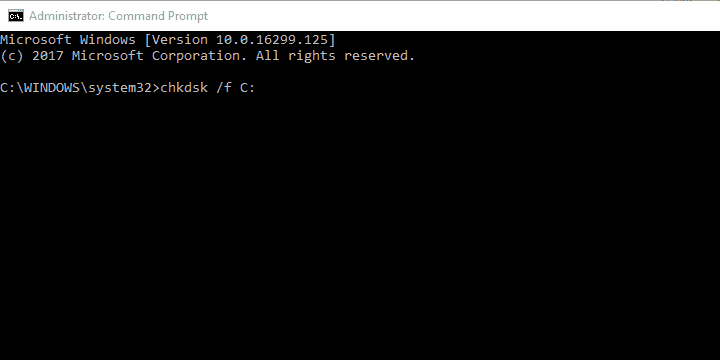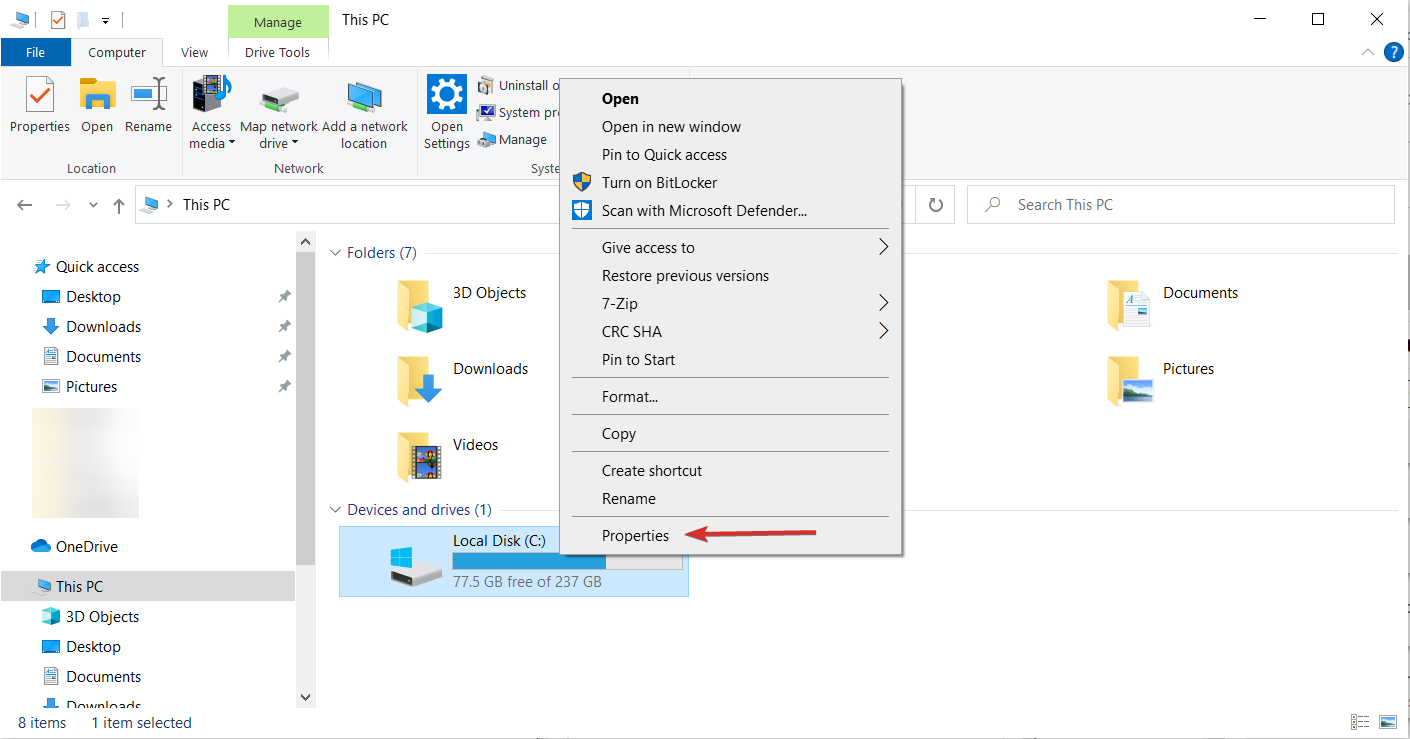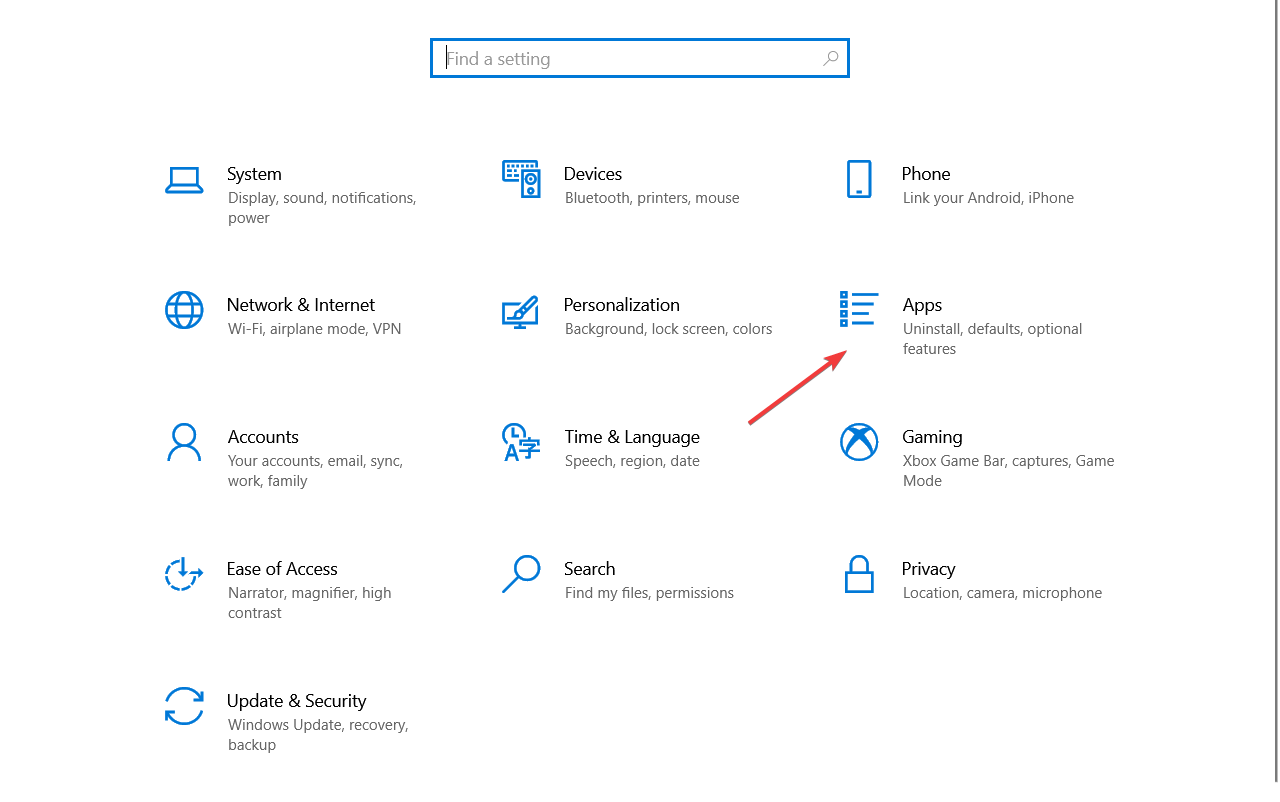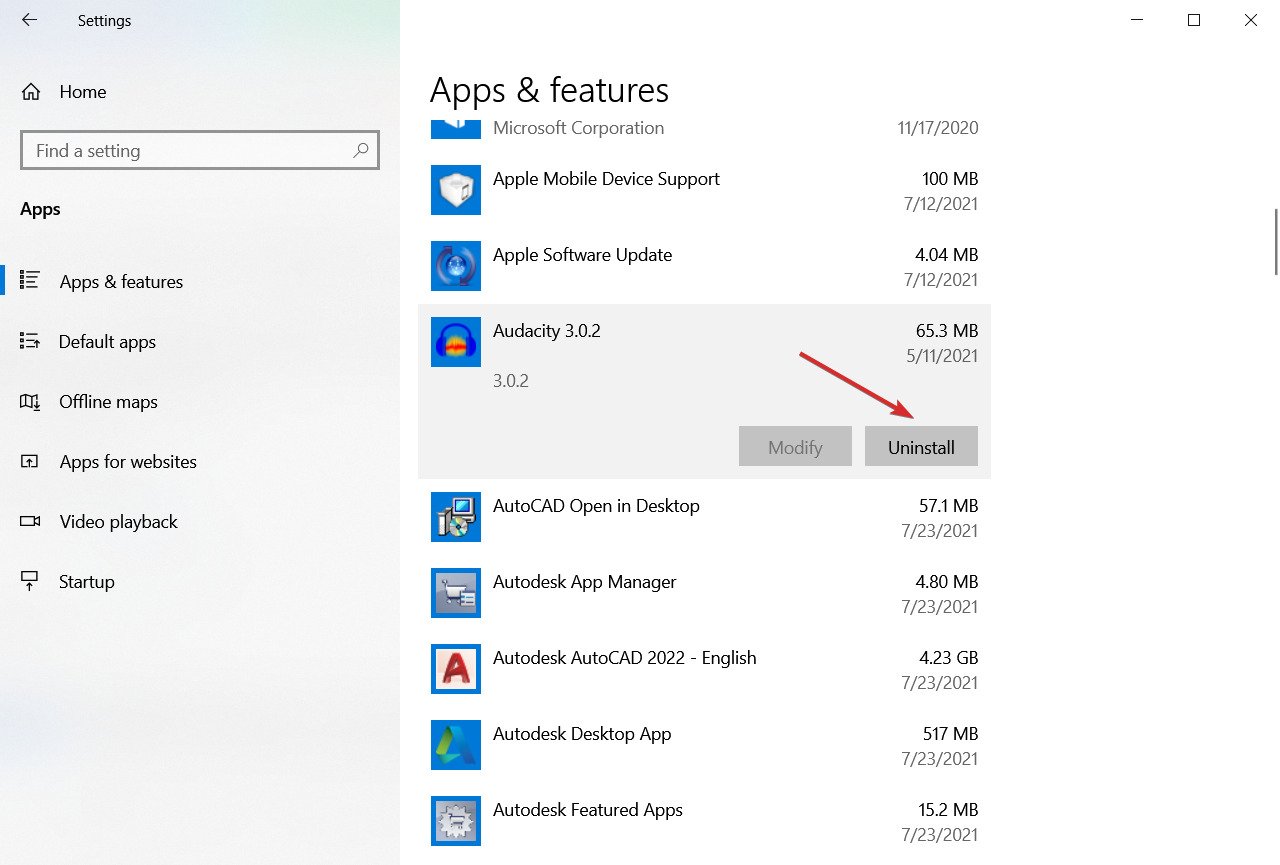How to Fix FPS Drops and Stuttering in PC Games
FPS drops are usually caused by old or corrupted graphics drivers
- Lag and stuttering are the most common result of FPS drops in games.
- FPS drops can occur if you have problems with your connection or the servers are too busy, while system configuration is also very important.
- If you experience sudden or random FPS drops on your PC, first check your graphics settings.

Being affected by high FPS drops is one of the most annoying experiences you can have as a gamer. Even though the implications are varied, the most common effect is a sudden stutter appearing randomly, which especially affects users who enjoy playing multiplayer releases, in which an optimal FPS rate is extremely important.
That being said, the blame can’t be thrown entirely on the OS, as many similar situations are caused by other factors, which we will discuss below.
Why does my FPS keep dropping in games?
FPS is an acronym for Frames Per Second and, in other words, it is the frequency at which consecutive images appear on a display in 1 second.
The term is used in gaming and the higher the framerate, the better the flow of the images on the screen. Low FPS is described by image interruptions and flickering.
The causes of frame drops are usually associated with old or corrupted drivers, but we outline below all the most important ones:
- Problems with drivers: The GPU drivers are probably the top troublemakers for gaming problems and FPS drops in particular.
- Overheating is causing the problem: You may have the right configuration for the game, but when the components start overheating, they start to decrease their performance. You can fix this by using laptop cooling software.
- Connection issues: If you’re playing the game online, it’s obvious that you will need an excellent connection with the game servers, thus your Internet connection speed is crucial in this regard.
Before trying any troubleshooting steps, our research suggests that you should first restart your PC. Make sure to try this before exploring the steps described in this guide.
How do I fix FPS drops in games?
Before starting any advanced procedures, you should:
- Check if the Internet connection is running optimally. In most scenarios, it’s not about your bandwidth speeds, but rather the latency of the data package. Basically, the higher the latency, the worse the game performance. You can check your latency, on the Speedtest website. You’ll need less than 50 ms to enjoy the online sessions seamlessly.
- Ensure that the system requirements are met. To run the game and expect peak performance, you should concentrate on the column called Recommended requirements:

1. Change the game’s graphic settings
Not all graphics settings found in modern games will work for every configuration out there. So, if you have slight issues with your FPS drops, make sure to change the graphics options.
Disabling Shadow Quality and Anti-aliasing is always good for starters. Also, the VSync option will considerably affect your GPU’s capabilities.
Other settings like Texture Quality, Shader Quality, Particles Quality, etc. are other options that need to be set on lower levels to reduce the FPS drop levels.
Try different variations until you find the one that optimizes performance and quality while keeping acceptable FPS levels.
 NOTE
NOTE
It all depends on your configuration and the ways the game is or isn’t optimized for that configuration. And sometimes even the top-notch PCs running a game will give you a hard time due to the badly optimized game engine.
2. Update the GPU drivers
2.1. Use Device Manager
- Click the Start button and select Settings from the menu that opens.
- Choose System.
- Select About from the left pane.
- Click on Advanced system settings.
- Switch to the Hardware tab and open Device Installation Settings.
- Select No in the dialog box that appears.
- Hit the Save changes button.
- Right-click the Start button, and select Device Manager.
- Expand Display adapters.
- Right-click on your GPU in the list and open Properties.
- Under the Driver tab, click on Roll-back driver.
- Restart your PC and check whether the issue persists.
If the Windows 10 Update feature forcibly installs another version, you can roll back the drivers and disable the automatic driver updating by following the steps above.
This should fix FPS drops and stuttering in your favorite PC games. Do ensure that after you make the changes, you restart your PC and check if things work properly.
We also have a very helpful guide that will show you what to do if Windows can’t automatically find and download new drivers.
In case you want to faster and safer method to ensure that this situation doesn’t occur again in the future, you can also use specialized driver updater software to keep all your drivers up-to-date.
- Download and install DriverFix.
- Launch the software.
- Wait for DriverFix to detect all your faulty drivers.
- The application will now show you all the drivers that have issues, and you just need to select the ones you’d liked fixed.
- Wait for the app to download and install the newest drivers.
- Restart your PC for the changes to take effect.

DriverFix
Keep you GPU on the peaks of their performance without worrying about its drivers.2.2 Check the manufacturer’s website
GPU drivers are a sensitive subject, especially on Windows 10 where the Windows Update feature manages drivers.
Most of the time, the generic driver won’t suffice, and we are all well aware that even the top-notch GPU will fail miserably without the proper software support.
In most scenarios, you’ll need the latest drivers provided by the OEM, but that’s not a rule. Some users resolved the GPU throttling and high FPS drops by installing an older driver’s version.
So, sadly, you have to spend some time experimenting with the available drivers until you find the right driver for your GPU.
These are the official support sites for major OEMs:
 Editor’s tip
Editor’s tip
How do I fix Nvidia FPS drops quickly?
- Press the Windows + R keys to open the Run dialogue.
- Type in msconfig and press Enter.
- Switch to the Services tab.
- Check the Hide all Microsoft services box and hit the Disable all button.
- Enable only Nvidia-related services.
- Restart your PC.
If you’re using legacy GPU, make sure to install legacy drivers. It’s not of the utmost importance for those to support Windows 10. Sometimes they’ll work regardless.
3. Disable background programs
3.1. General applications
- Press Ctrl + Shift + Esc keys to start Task Manager.
- Find any programs or processes that can affect the PC performance, right-click on them and select End task.
Certain background programs are known for resource-hogging, making them quite unwelcome while gaming. Disabling their respective background processes should improve the in-game performance and reduce FPS drops.
Here’s the list of programs you should avoid while gaming:
- VoIP programs like Skype
- Peer-2-peer applications like uTorrent
- Download managers
- Browsers (Google Chrome especially)
- Recording and live-streaming software
If you’re running a powerful enough PC, the majority of background applications won’t affect the framerate. The ones we enlisted are throttling your bandwidth which can be a problem, for multiplayer, connection-dependent games.
3.2. De-activate the Xbox Game bar
- Press the Windows + I to open the Settings app.
- Open Gaming.
- Click on the Xbox Game Bar option from the left pane.
- Toggle off the Xbox Game Bar option from the right pane.
Our research suggested that the FPS improved after disabling the Xbox Game Bar in Windows. You can do that easily by following the steps above.
However, you should know that some games use Game Bar for game invites so you might want to enable it back if you want to use the feature.
4. Modify the system’s power settings
- Press the Win key to open the Start menu.
- Type power in Windows Search and select Power & sleep settings.
- Click on Additional power settings.
- Select High performance.
- Close the window.
5. Turn on the Game Mode
- Start the Settings app by pressing the Windows + I.
- Click the Gaming option.
- Select the Game Mode option from the left pane.
- Toggle it to On.
The Game Mode setting is turned on by default in Windows 10, but sometimes you can find it turned off for some reason. The simple steps above will help you easily turn on the Game Mode which will help you achieve a steadier framerate during your play.
6. Scan for HDD errors
- Open the Start menu by pressing the Win button.
- Type command prompt and click on Run as administrator.
- Type the following command and press Enter:
chkdsk /f C: - Replace C: with other partition letters if it’s named differently.
If chkdsk is giving you headaches, check out our guide on how to fix chkdsk and go through with the scanning process.
7. Check the temperature of your system
Expert tip:
SPONSORED
Some PC issues are hard to tackle, especially when it comes to corrupted repositories or missing Windows files. If you are having troubles fixing an error, your system may be partially broken.
We recommend installing Restoro, a tool that will scan your machine and identify what the fault is.
Click here to download and start repairing.
Overheating. There’s no single hardware-related problem that is a bigger threat to your PC than this element. Since today we’re discussing FPS spikes and sudden drops, overheating is probably the biggest suspect for the issue at hand.
Let’s imagine a common scenario: you start the game after the PC was idle, the game works great until some time, and then the FPS goes haywire. This is often due to the CPU and/or GPU overheating and thus underperforming.
To self-preserve themselves under the intense heat and avoid malfunctions, the main PC components start working slower. Finally, your PC should shut down forcibly if the temperatures pass the allowed limits.
So, for starters, make sure to acquire proper temperature monitoring software like CoreTemp. Above 90-95 degrees Celsius, you will start experiencing performance drops and, in the worst-case scenario, critical hardware damage.
What can I do to improve the cooling system and reduce the temperatures while gaming?
Firstly, you’ll need to get your hands dirty and clean the inside of your PC casing. The special focus should be on the exhaust and coolers.
Additionally, replacing the thermal paste should be done regularly, especially if you’re an avid gamer.
The paste that acts as a conductor tends to lose its functionality after a few months of usage, so make sure to apply a new layer accordingly.
 NOTE
NOTE
Furthermore, it doesn’t hurt to add some extra fans and improve the cooling of the unit. However, double-check the PSU capabilities before doing so.
If you still get to experience the problem first-hand, we have an article on what to do if your laptop is overheating and solve the issue before it’s too late.
8. Defragment your HDD
- Press the Windows + E to start File Explorer.
- Click on This PC.
- Right-click on any partition and open Properties.
- Select the Tools toolbar.
- Click on the Optimize button below.
- Analyze and defragment partitions individually if needed.
As you might expect, the efficiency of how your hard drive works is another essential part that will certainly affect the overall gaming performance.
A hard drive is probably the most prone to malfunctions, and it’ll, in comparison to a CPU or GPU, lose its initial performance values over time.
This, of course, applies only to physical drives, not SSDs so if you have the latter, go past this solution. If you’re interested in improving the reading scores of your hard drive, you can invest in a good SSD.
If you don’t want to use the defragmentation tool included with Windows 10, you can use alternative software. Take a look at this great list including our best tune-up utilities and choose the one that fits you best.
9. Reinstall the game
- Click the Start button in Windows and select Settings.
- Choose the Apps option from the list.
- Click on your game, and press the Uninstall button.
- Reinstall the game from the installer file or media.
Finally, if none of the previous steps helped you by eliminating or at least reducing the in-game FPS, we advise you to reinstall the game.
Clean reinstallation is always a viable solution, especially if you use third-party software to clear the registry inputs.
10. Turn off background slideshow
- Press Win + I keys to open Settings.
- Click on Personalization.
- Select Background.
- Select a solid or static background wallpaper from the drop down menu.
One user suggested that setting up a solid wallpaper gets rid of the FPS drop issue for games on their PC. This has notably helped several users fix the problem.
How to avoid FPS drops in games?
If you managed to fix the problem with the spike FPS drops, you might also take into consideration our tips on how to stay away from this problem in the future.
➡ Invest in a powerful GPU or choose the e-GPU route
Having a good GPU installed on your PC is essential when it comes to gaming performance, but in some cases, it would be advisable that you invest in a powerful e-GPU device.
➡ Ensure that you stay on top of your PC’s maintenance
This advice includes both the physical cleaning of any coolers and components, but also ensuring that the component’s connection is optimal.
To go a step further, de-cluttering your hard drive is another important element, and you can do so with a variety of PC optimization tools.
➡ Run your games from an SSD
As an SSD is endlessly more efficient at processing data than an HDD, investing in a good SSD will save you a lot of stress in the long run.
As you can see, there are a variety of troubleshooting steps that you can try to resolve a high FPS drop while gaming on your PC.
With the exponential growth of graphics and thus requirements when it comes to the latest game releases, even the most powerful PCs are bound to experience this problem at some point in time but following our advice will prevent it from happening suddenly, so you will be able to react accordingly.
Whether it is about changing the in-game settings, or about investing in a GPU to take your gaming to the next level, there is always room for improvement when it comes to how we take care of our PCs.
You can try using one of the best game booster software for Windows 10 PCs that promise to improve FPS and eliminate lag, but not even this tool can change much if the system capabilities are not up to par with the task, you’re throwing at it.
We hope this guide has provided you with some useful information, and that it managed to help you resolve the high FPS drop issues once and for all.
If you want to get in contact with us, or simply share your opinion on this article, feel free to use the comments section found below this guide.
Still having issues? Fix them with this tool:
SPONSORED
If the advices above haven't solved your issue, your PC may experience deeper Windows problems. We recommend downloading this PC Repair tool (rated Great on TrustPilot.com) to easily address them. After installation, simply click the Start Scan button and then press on Repair All.
